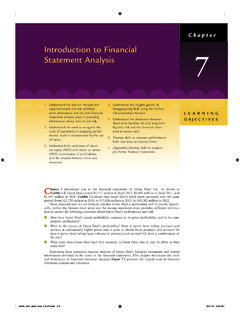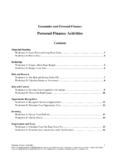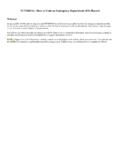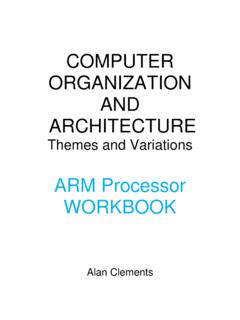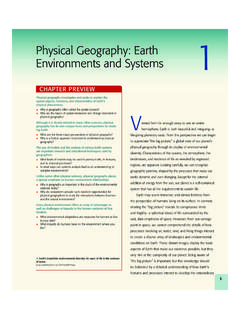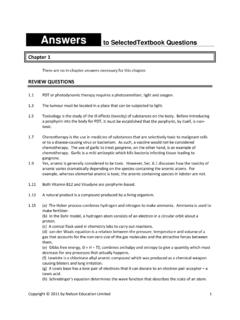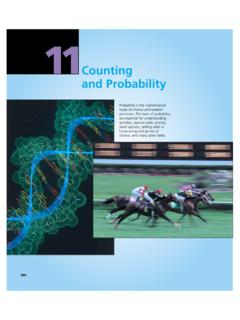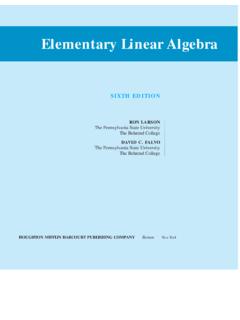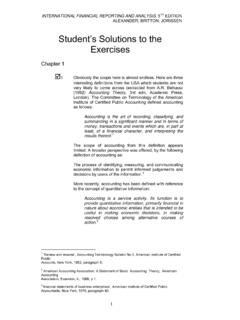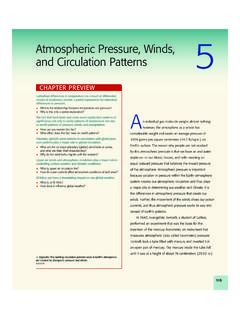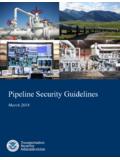Transcription of Practice Questions with Solutions - Cengage
1 Practice Questions with Solutions Chapter 1. 1. What is the correct approach for addressing security and organization objectives? a. security and organization objectives should be developed separately. b. security should drive organization objectives. c. security should support organization objectives. d. The site security officer should approve or reject organization objectives. 2. The statement, Promote professionalism among information system security practitioners through the provisioning of professional certification and training is an example of a/an: a. Mission statement b. Objective c.
2 Goal d. Requirement 3. The two components of risk management are: a. Risk assessment and risk analysis b. Vulnerability assessment and risk treatment c. Risk assessment and risk mitigation d. Risk assessment and risk treatment 4. A security manager needs to perform a risk assessment on a critical business application in order to determine what additional controls may be needed to protect the application and its databases. The best approach to performing this risk assessment is: a. Perform a qualitative risk assessment only b. Perform a quantitative risk assessment only c. Perform a qualitative risk assessment first, then perform a quantitative risk assessment d.
3 Perform a quantitative risk assessment, then perform a qualitative risk assessment 5. A qualitative risk assessment is used to identify: a. Vulnerabilities, threats, and countermeasures b. Vulnerabilities, threats, threat probabilities, and countermeasures c. Assets, risks, and mitigation plans d. Vulnerabilities and countermeasures 6. The impact of a specific threat is defined as: a. The cost of recovering the asset b. The cost required to protect the related asset c. The effect of the threat if it is realized d. The loss of revenue if it is realized 7. Exposure factor is defined as: a.
4 The part of an asset's value that is likely to be lost by a particular threat b. The probability that the threat will be realized c. The probability that a loss will occur in a year's time d. The cost of a single loss 8. A security manager is performing a quantitative risk assessment on a particular asset. The security manager wants to determine the quantitative loss for a single loss based on a particular threat. The correct way to calculate this is: a. Divide the asset's value by the exposure factor b. Multiply the asset's value times the annualized rate of occurrence c. Multiply the asset's value times the single loss expectancy d.
5 Multiply the asset's value times the exposure factor 9. A security manager is performing a quantitative risk assessment on a particular asset. The security manager wants to estimate the yearly loss based on a particular threat. The correct way to calculate this is: a. Multiply the single loss expectancy times the asset's value b. Multiply the asset's value times the exposure factor c. Multiply the asset's value times the exposure factor times the single loss expectancy d. Multiply the single loss expectancy times the annualized rate of occurrence 10. Annualized loss expectancy is defined as: a.
6 The annual estimate of loss of all assets based on all threats b. The annual estimate of loss of an asset based on a single threat c. The annual estimate of loss of an asset based on all threats d. The annual estimate of loss of all assets based on a single threat 11. Annualized loss expectancy is calculated using which formula: a. ALE = ARO x SLE. b. ALE = EF x SLE. c. ALE = ARO x AV. d. ALE = ARO / SLE. 12. A risk manager has completed a risk analysis for an asset valued at $4000. Two threats were identified; the ALE for one threat is $400, and the ALE. for the second threat is $500.
7 What is the amount of loss that the organization should estimate for an entire year? a. $450. b. $500. c. $900. d. $100. 13. The options for risk treatment are: a. Risk reduction, risk assumption, risk avoidance, and risk acceptance b. Risk acceptance, risk reduction, risk transfer, and risk mitigation c. Risk acceptance, risk reduction, and risk transfer d. Risk acceptance, risk avoidance, risk reduction, and risk transfer 14. An organization recently completed a risk assessment. Based on the findings in the risk assessment, the organization chose to purchase insurance to cover possible losses.
8 This approach is known as: a. Risk transfer b. Risk avoidance c. Risk acceptance d. Risk reduction 15. After completing a risk assessment, an organization was able to reduce the risk through the addition of detective and preventive controls. However, these controls did not remove all risk. What options does the organization have for treating the remaining risk? a. Accept, avoid, reduce, or transfer b. None the organization must accept the risk c. The organization must either accept or transfer the risk d. Does not apply: remaining risk cannot be treated further 16. A security door has been designed so that it will ignore signals from the building's door entry system in the event of a power failure.
9 This is known as: a. Fail soft b. Fail open c. Fail closed d. Fail secure 17. CIA is known as: a. Confidentiality, Integrity, and Availability b. Computers, Information, and Assets c. Confidence In Applications d. Controls, Integrity, and Availability 18. An organization suffered a virus outbreak when malware was downloaded by an employee in a spam message. This outbreak might not have happened had the organization followed what security principle: a. Heterogeneity b. Fortress c. Integrity d. Defense in depth 19. An organization has a strong, management-driven model of security - related activities such as policy, risk management, standards, and processes.
10 This model is better known as: a. Risk management b. security oversight c. security governance d. security control 20. The statement, Information systems should be configured to require strong passwords, is an example of a/an: a. security requirement b. security policy c. security objective d. security control 21. An organization wishes to purchase an application and is undergoing a formal procurement process to evaluate and select a product. What documentation should the organization use to make sure that the application selected has the appropriate security -related characteristics?
